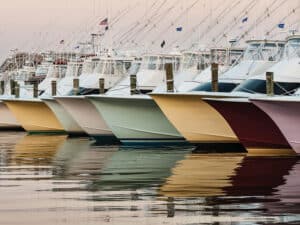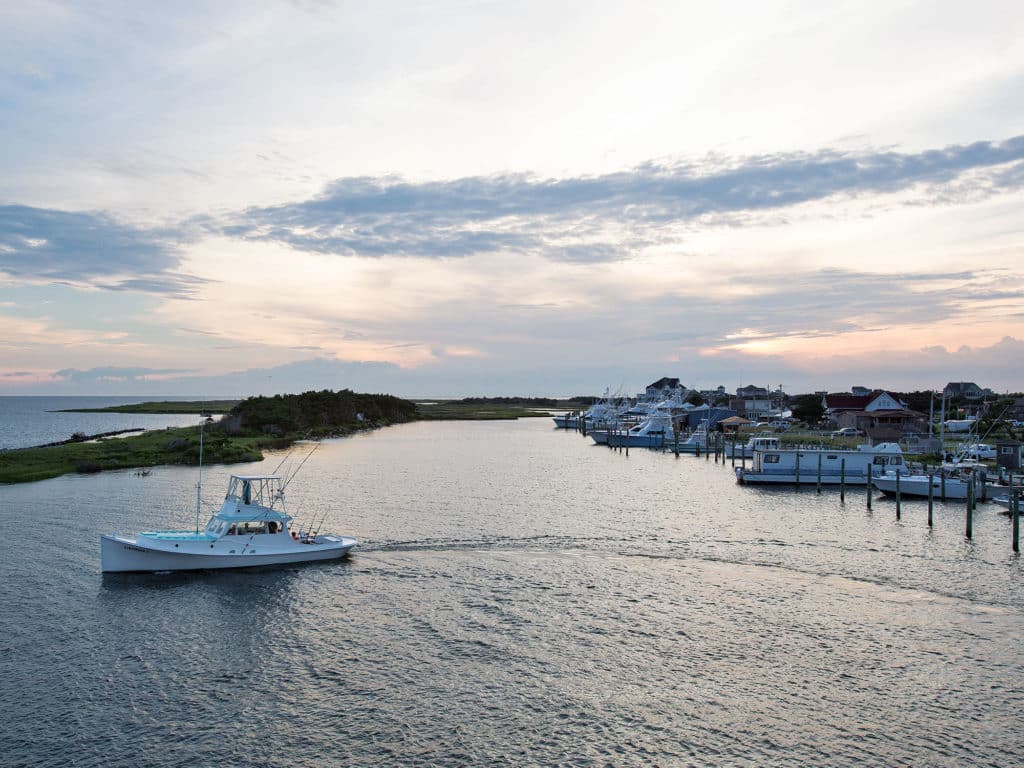
The distinct lines of Albatross III slip through the fog in the early morning hours with Capt. Ernie Foster at the helm as she departs from one of the most historic fishing villages in the United States — North Carolina’s Hatteras Harbor. The red and white candy-striped outriggers are unmistakable, as is her rounded transom and sleek, low-profile design, moving past the rocks en route to the inlet and out to the Gulf Stream for a day offshore with her guests. Not built for speed or to compete with today’s modern sport-fishers, she and her two sisterships are their own breed. They are a living part of big-game history.
A Dream
Like many firsts, the initial Albatross was born from a thought of a young Capt. Ernal Foster (Ernie’s father), then in his early 20s, who had a desire to do something many of the village elders said couldn’t be done. At the time, Hatteras was just a small outpost for commercial fishermen, but it became a destination for sportsmen who came down in the fall to hunt, and some asked to go fishing with a rod and reel. Ernal saw an opportunity that could allow him to make his primary income by doing something other than commercial fishing: taking these wealthy clients out fishing with a boat specifically built for that purpose, rather than using a make-do commercial boat.
Ernal began constructing his dream by purchasing Atlantic white cedar (known by the locals as juniper) from East Lake, North Carolina. The greater challenge was finding a boatbuilder to do the job — it only took five tries to find the right one. Ernal’s perspective: “It’s my wood and my money, and if it doesn’t turn out right, it’s my problem.” The builder who finally agreed to do the job was Willis and Sons Boatyard in Marshallberg, North Carolina. And so, in 1937, the first charter boat in North Carolina hit the water: Albatross. The boat was named after the bird from Samuel Coleridge’s “The Rime of the Ancient Mariner.” Ernal admired the bird’s gracefulness and knew it would be the perfect name for his boat. During his first season, Ernal had four charters, but that wouldn’t last long. That same year, Hugo Rutherford hired another local captain and landed the first blue marlin caught off Hatteras, a 570-pounder. However, because of the approaching war, this angling accomplishment received little attention from the media.
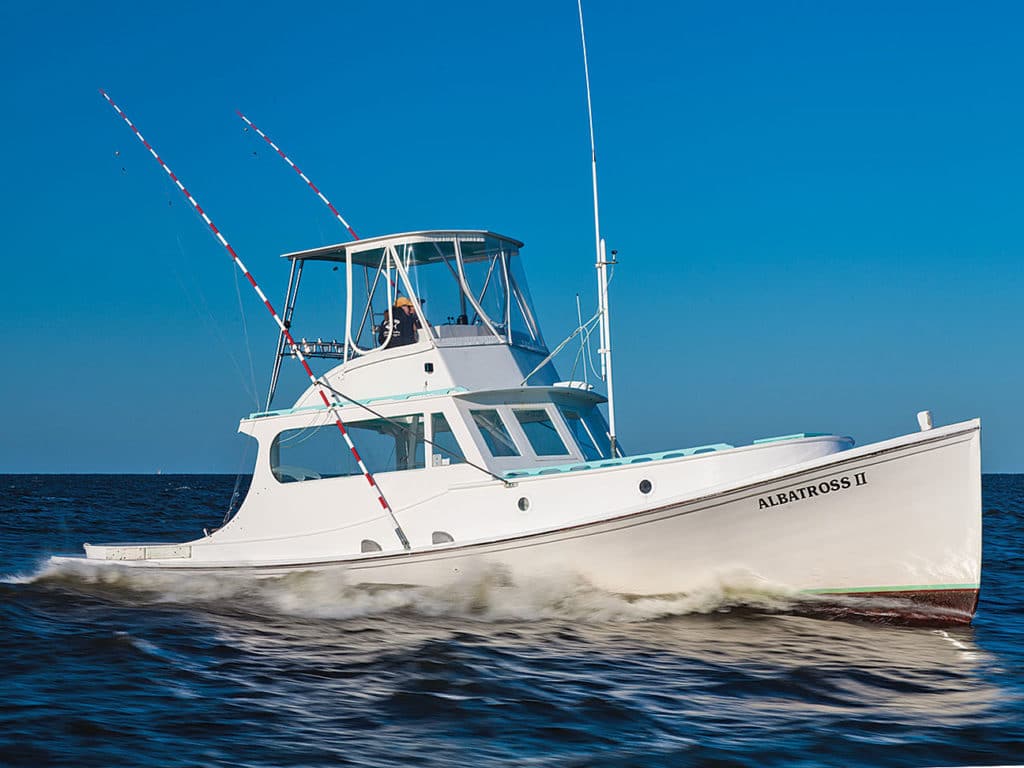
The Boom
After a short hiatus during World War II, where Albatross was forced into military duty as a harbor patrol boat, tourism in the Outer Banks began to flourish after the war. Thankfully, Ernal and his charter operation became the poster child for the tourism bureau, and business really began to take off. With budding sport-fishing destinations in Florida to the south and Ocean City, Maryland, to the north, Ernal benefitted from fishermen traveling between these areas and sharing their wealth of sport-fishing knowledge. The other benefit of Hatteras was its proximity to the Gulf Stream — others noticed too.
As word got out about the sport-fishing opportunities, anglers from all over descended upon the small fishing village. Soon enough, business was booming for Ernal, so much that he persuaded his cousin, Capt. Bill Foster, and Capt. Milton Meekins to build their own charter boats. The fleet was born: Albatross II splashed in 1948, with Albatross III arriving in 1953.
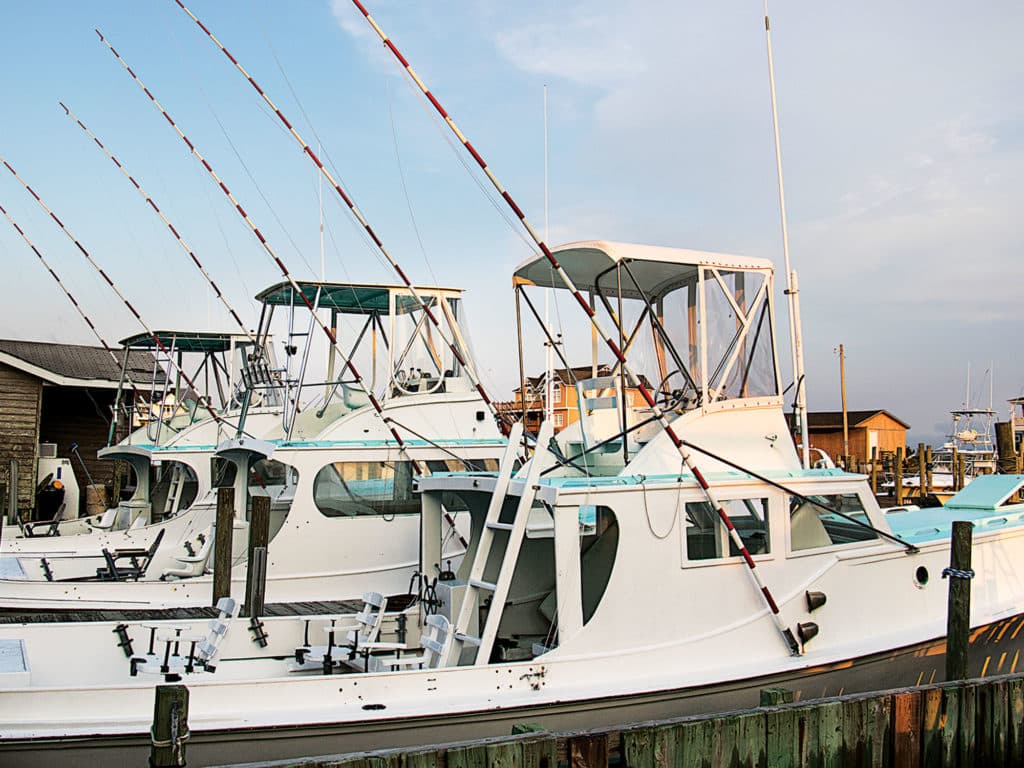
Early Milestones
In June 1951, Ernal purchased a new rod and talked one of his groups of clients into trying their luck at blue marlin rather than meat fish. Having seen several blues in the days before, Ernal pitched out a Spanish mackerel in the spread, which was almost immediately inhaled by a blue marlin. Despite the sought-after game fish on the other end of the line, the charter refused to reel it in, saying they had come to Hatteras for fun, not for work. So after a two-hour fight, Ernal had the 475-pound fish boat-side; back on land, it was the first-ever blue marlin landed by the Albatross fleet. Thanks to Ernal’s relationship with the tourism bureau, the photo of the fish went out to nearly every sports page in the country. Almost overnight, Hatteras became the must-visit locale to catch blue marlin in the United States.
The photo garnered the attention of Ross Walker and his wife, Betsy. They were big-game anglers from Richmond, Virginia, and chartered Albatross II for a week of blue marlin fishing during the summer of 1952. Betsy caught a really nice one and became the first woman to land a blue marlin north of Florida. Again, the news spread throughout the country, and Hatteras cemented itself as a blue marlin hot spot.
Other charter operations began to pop up, and by the mid-1950s, there were 10 boats operating out of Hatteras, in addition to established fleets at both Oregon Inlet to the north and Morehead City to the south. But in 1958, something extraordinary happened. Dr. John Cleveland — who went by Jack — and his wife, Ellie, booked a week of marlin fishing with Capt. Bill Foster aboard Albatross for their honeymoon. After successfully hooking and fighting a blue during one of their days offshore, Cleveland made the request to let the marlin go, which was unheard of at the time. Bill obliged and, in doing so, became the first captain ever to release a billfish on purpose off North Carolina. It’s now a common practice, but we can all look back to the Albatross fleet as the first to set the standard for catch-and-release.
The day before the annual Hatteras Marlin Club tournament in 1962, Bill set yet another threshold by leading his angler, Gary Stukes, to an 810-pound blue marlin — a world record at the time. If Hatteras hadn’t earned the nickname “Blue Marlin Capital of the World” by then, this catch certainly solidified that designation.
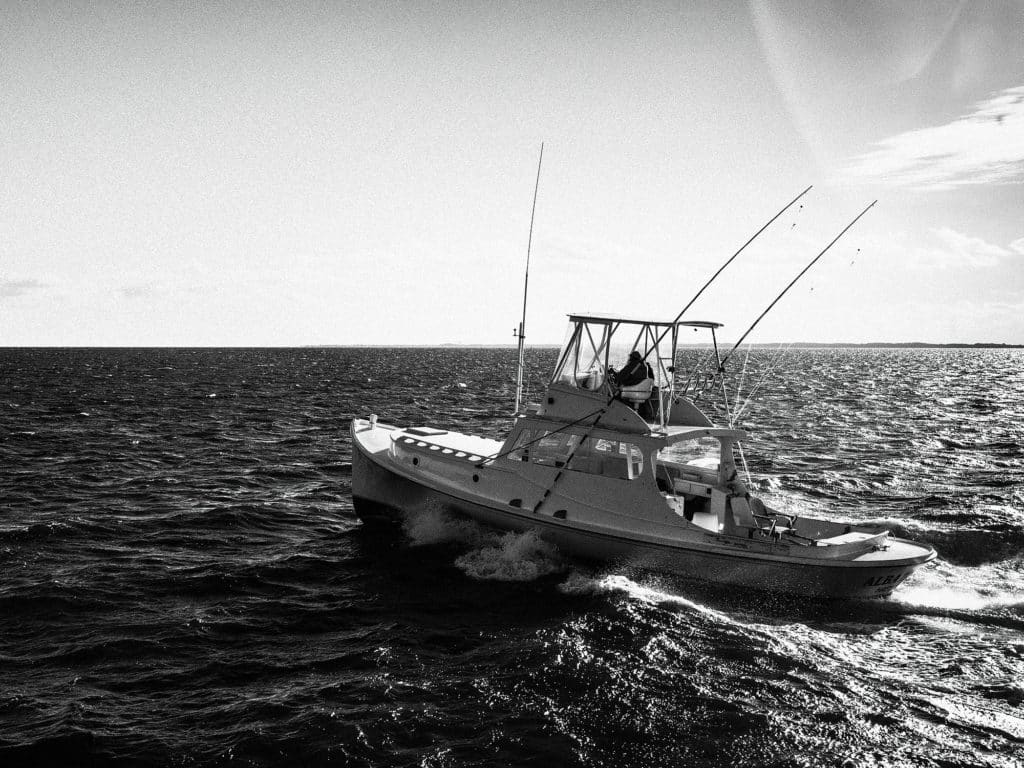
The Boats
What is truly remarkable about the Albatross fleet is that all three of the boats are still fishing today — *Albatross III *even still has the original port outrigger from 1953. All of that credit is due to Ernie, who began working for his father in 1958 and has fished every season off Hatteras ever since. Now 70 years old and a retired schoolteacher and guidance counselor [so he could have the summer off], Ernie took over sole responsibility of the operation in 1977. Although it’s a full-time job to keep the historic fleet fishing, Ernie has also built and maintained a multigenerational customer base that wants the unique experience of fishing aboard one of the most iconic sport-fishing boats in history.
Ernie’s Albatross III resembles the same basic design as her two sisterships; the major distinction between the three is the amount of bow flare. Each successive build increased the flare, as expected with the standard for other custom Carolina boats, to increase the lift and dryness of the ride during those nasty days offshore. The hulls of all three are hard-chined with deep-V deadrises and the props set forward of the tucked sterns. This uncommon design creates very little prop wash, ideal for trolling offshore.
Beginning in the ’90s, Ernie rebuilt each of the boats by adding fiberglass sheathing for added structural stability to endure the years of service ahead. There is no doubt they are stronger now than when they were built, but that’s to be expected from a man who has such great pride in the tradition and future of the fleet. Albatross is powered by a single engine, but Albatross II and Albatross III are powered by twin engines — Albatross III is pushed along by a pair of 250 hp Cummins diesels that give her a cruising speed of about 16 knots. Their design is no mistake, and while unconventional by today’s standards, the rounded stern is more about function than it is about looks.
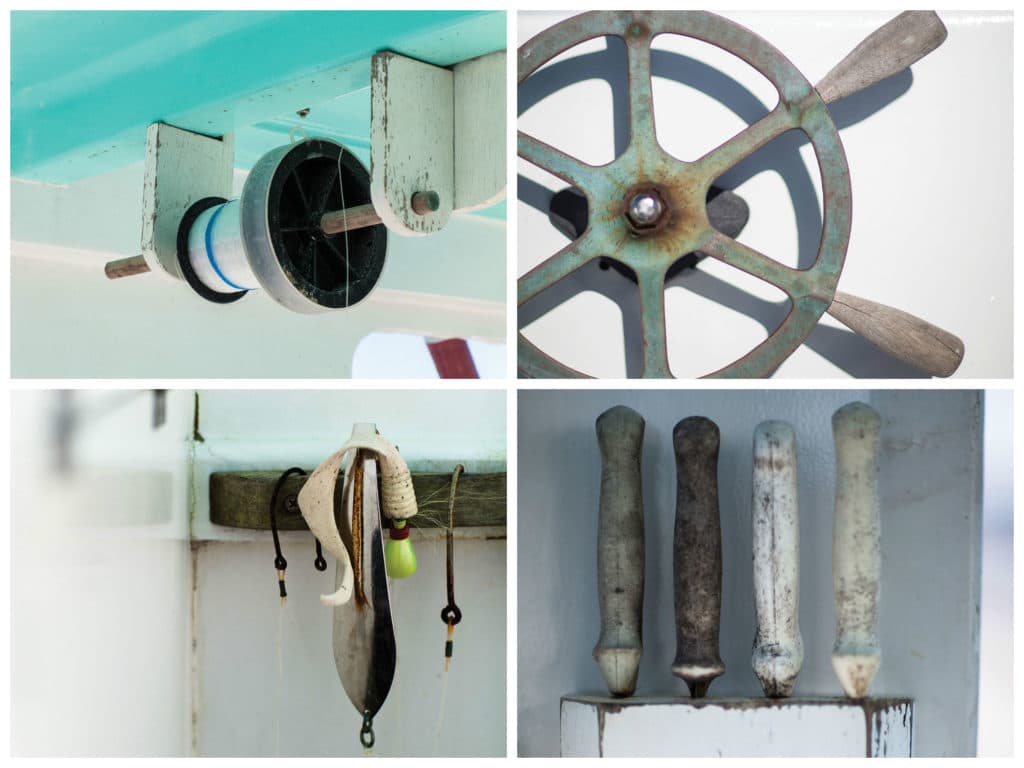
Form and Function
Round-stern boats like Albatross were developed sometime around the turn of the century, and while they are unique looking, they dominated the waterfronts of all coastal Carolina fishing communities through the early 1950s. Purely functional, the design allowed fishermen to work efficiently and be directly above the net as they pulled it up from below with the day’s catch. The other advantage of this design was in direct response to the low-horsepower engines of those days. When coming back in from offshore with a following sea, the boats simply could not outrun the breakers in the inlet on a rough day. The round stern allowed the waves to break around the boat when overtaking the vessel, adding less resistance and much greater safety for all on board.
While horsepower is no longer a concern for modern sport-fishers and their need to outrun waves coming through the inlet, the rounded stern of the Albatross fleet also allows the mates to get out over the fish when backing down so they can easily gaff a mahimahi or tuna without worrying about them getting caught up in the wheels. The design prevents large amounts of water from coming over the transom when backing down on a billfish or a bluefin tuna — an important factor on cold winter days. Overall, these boats “are equally at home in the shallows of Hatteras Inlet and the Gulf Stream currents,” says Ernie.
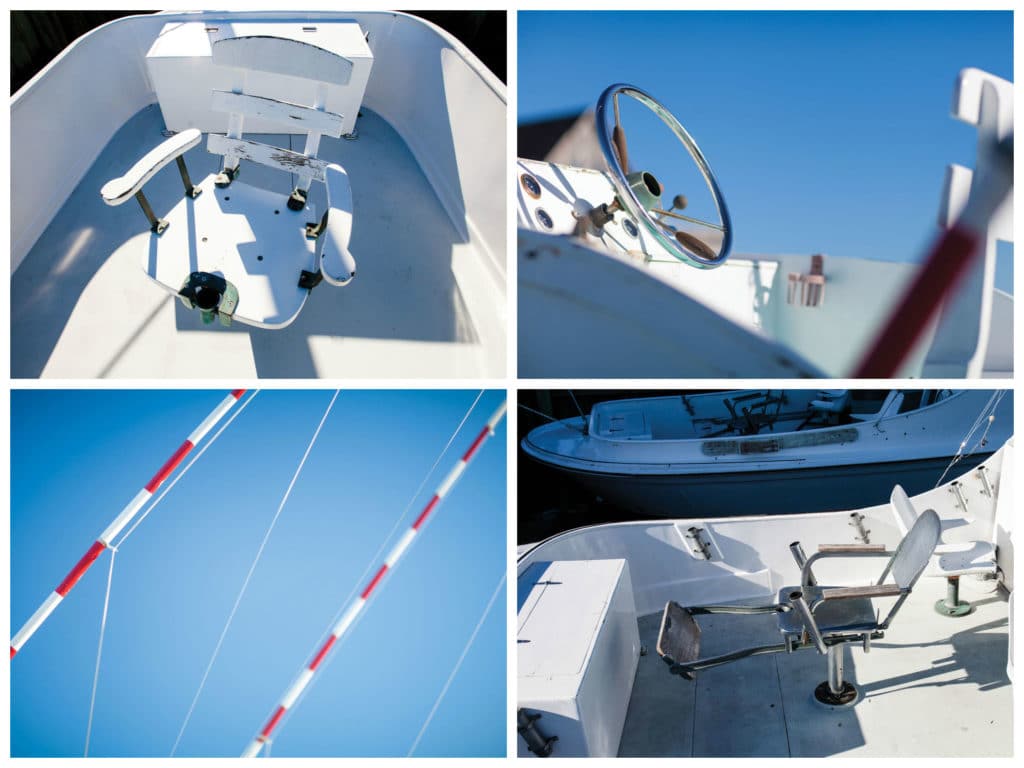
A Living Legacy
While almost everything on board looks the same today as it did decades ago (including the original metal and wood-slat fighting chairs in the middle of the cockpits on each of the boats) the fleet continues to serve as some of the best fishing platforms in the Carolinas. The Albatross spends most of her days nearshore fishing because of the single engine, but when the Albatross II and Albatross III return to the docks after a day of fishing in the Gulf Stream, you can bet they’ll back in and unload a pile of mahimahi, tuna and wahoo, just like their modern counterparts.
There is no doubt the captains on the bridges of the Albatross fleet will forever be ingrained in the history of big-game fishing:
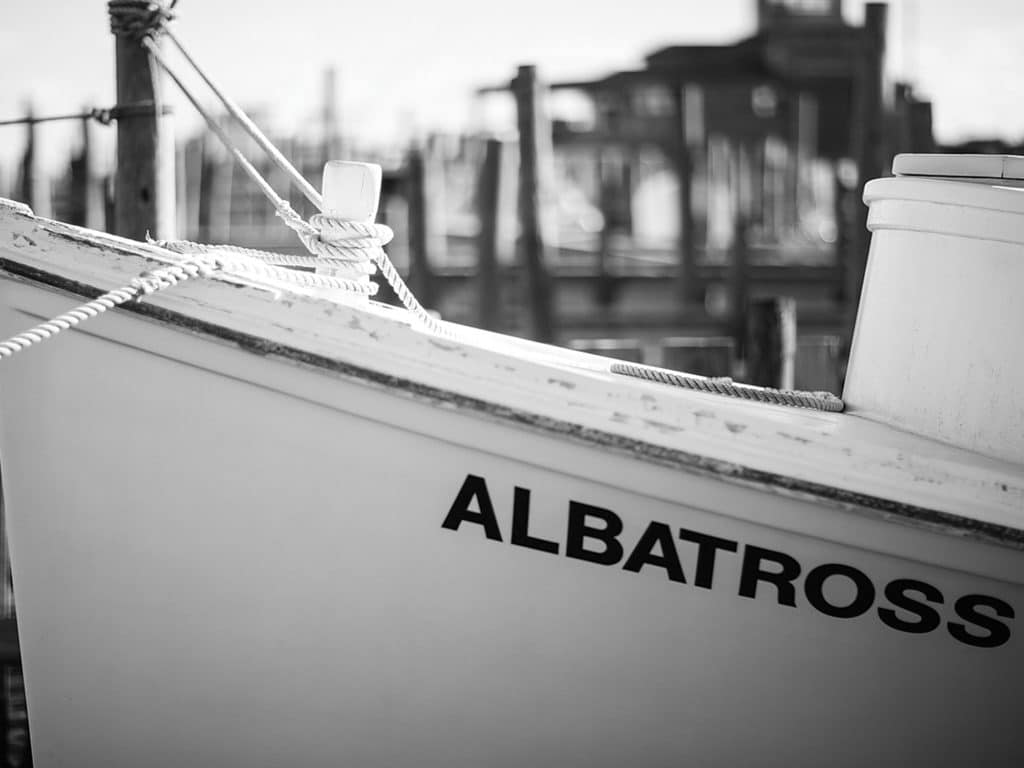
As we look back at the rich tradition of the Albatross fleet, we can’t help but think about how Ernal’s incredible dream in 1937 spurred the now multimillion-dollar fishing industry off North Carolina. He put Hatteras on the map as “The Blue Marlin Capital of the World,” and his fleet set the pace for world records and the first blue marlin willingly released. The candy-striped outriggers of the Albatross fleet will always be an iconic symbol — Ernie would never dare change their paint scheme — that evokes memories of how the original Albatross and her sisterships set the standard for big-game fishing in the Carolinas. The best part: They are still out there fishing with style and class, backing down on blue marlin like they did nearly 80 years ago.



